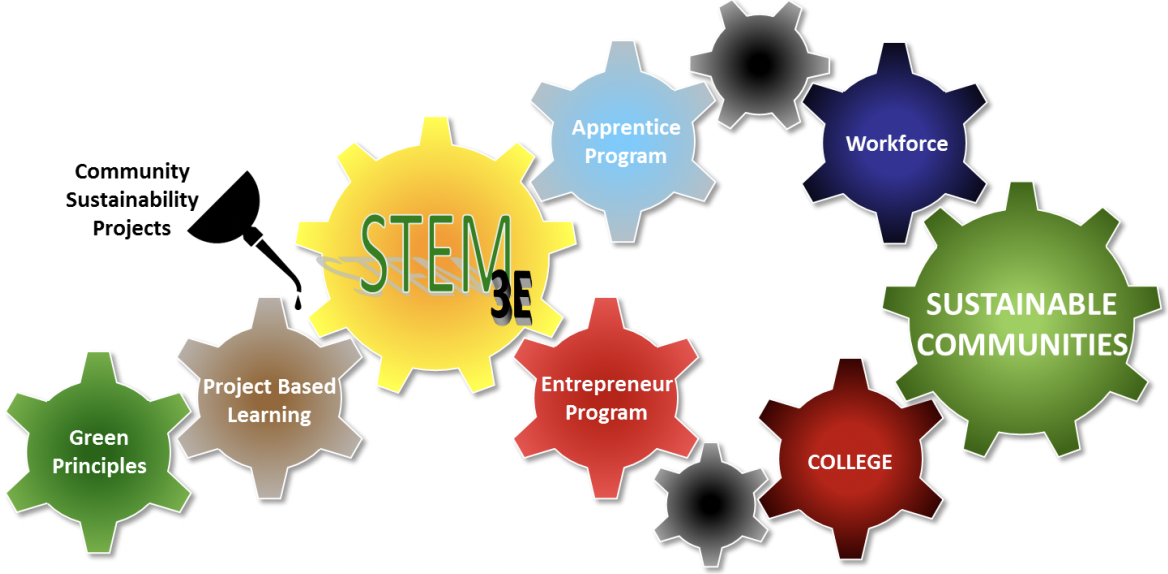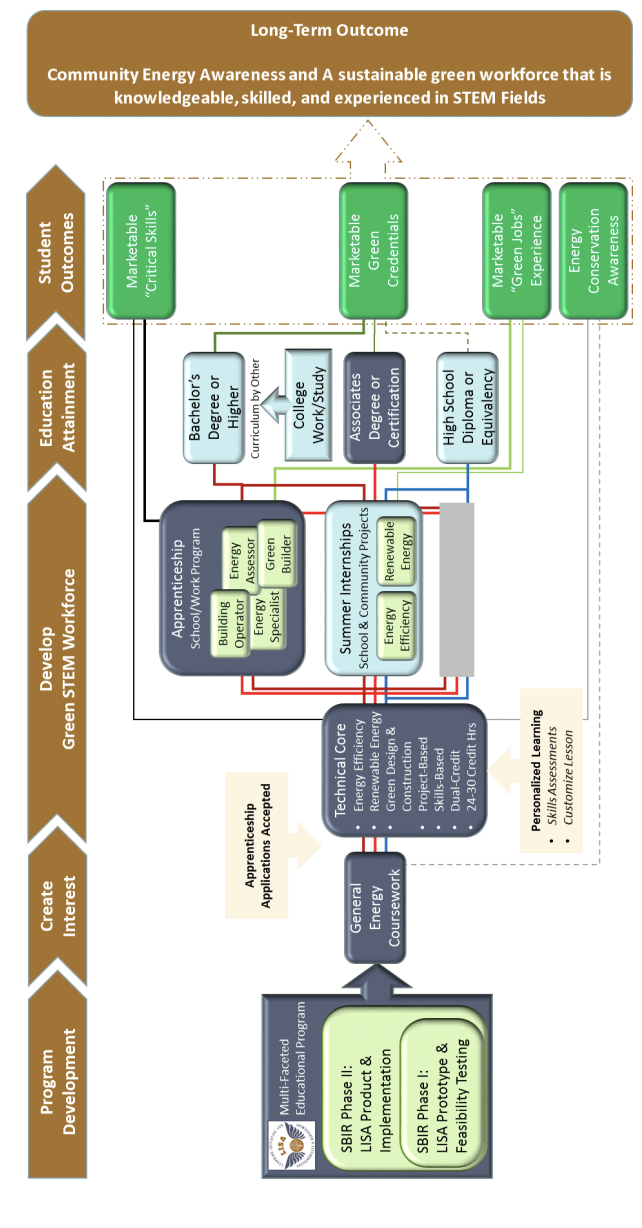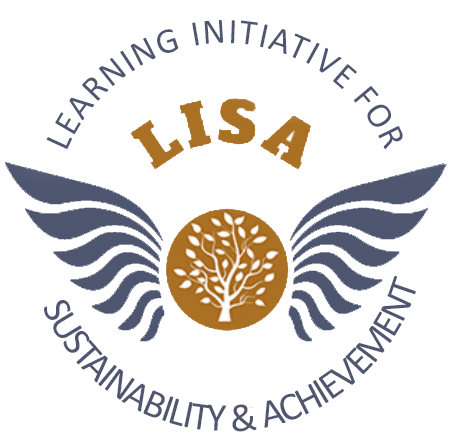A COMMUNITY FOCUSED SOCIAL ENTREPRENEURSHIP
ES Development Group (ESDG) is a social entrepreneurship built on the foundation of energy principles to improve the energy efficiency of existing buildings and structures, increase public conservation awareness and improve the way we identify and implement energy efficiency measures (i.e. market disrupter). ESDG recognizes the value of knowledge, both in intellect and measurable data, to identify energy issues in buildings and introduce technologies through a SMARTER™ (Saving, Maintaining and Reinvesting through Environmental Re-Engineering) more economical approach. Coupling interests in education and energy issues with our passion for providing today’s students with exposure to energy-related issues and future career opportunities in green industries. ESDG is dedicated to developing low-cost, innovative educational and commercial products that tackle energy waste in buildings and are readily available to the public and private sectors. In particular, ESDG specializes in SMARTER™ solutions for schools (particularly low-income), small businesses and tomorrow’s green jobs workforce.
A COMMITMENT TO COMMUNITY
RAISING THE BAR FOR U.S. EDUCATION
“A shortage of adequately skilled workers in the U.S. is a problem faced by most companies and could compromise the country's economic competitiveness if left unaddressed.”
Business Roundtable/Change the Equation Survey, November 2014
“America is in the midst of a skilled labor shortage, as hundreds of thousands of available jobs go unfilled because workers lack the necessary training. But even more upsetting, is the attitude of many Americans that the trades are merely a last-ditch alternative when college doesn't work out.”
Mike Row, Host of Dirty Jobs
As a means of separating job applicants, employers use education to define the appropriate skill set required for certain jobs. When employers face having to further train a new hire, they assume that more education will reduce the need to invest in training. Today, institutions are offering more standardization in the classroom and less vocational exposure. Yet with this approach, students with a Bachelor’s degree continue to struggle to find gainful employment in a profession of their choosing and are often strapped with significant student load debt. ESDG wishes to add a skills-based, green-jobs solution to the many intelligent strategies being implemented across the country.
Now, let’s consider the following:
National graduation rates are at 80% (20 students without a H.S. diploma)
53% of high school graduates go on to college (37 students with a H.S. diploma only)
31% of college students graduate within 6 years (29 students don’t complete their degree)
Students are increasingly leaving college with substantial student loan debts
Unemployment rates for the labor force ages 20-24 are double (2X) the national rate and those ages 16-19 are three times (3X) the national rate
One primary reason for the lack of focus on energy concerns in schools and small buildings is due to limited resources; energy efficiency solutions require skilled professionals and/or costly equipment to identify energy efficiency measures. The return-on-investment is much longer for small buildings because the minimum fees for energy assessments, retro-commissioning, and energy management systems are too high relative to the return through energy savings. Providing a simple, economical solution for small building owners will have a positive impact on the economy and the environment.
A COMMUNITY APPROACH TO SUSTAINABILITY
A coalition of educational institutions (both K-12 and higher Ed), non-profit organizations, and private businesses is being formed to successfully develop and deploy LISA. Involving public, private, and institutional organizations allows LISA to be developed into an efficient, sustainable apprenticeship model that is quickly scalable into other communities.
LISA BUILDS A PATH TO STUDENT ACHIEVEMENT
LISA is a STEM based educational/apprenticeship program that offers students multiple pathways to receive the education and training they need to secure a technical career, with an emphasis in the green goods and services sector. By offering multiple pathways, students are able to choose one that gives them the greatest chance to successfully achieve their goals. LISA is also flexible to allow students to change paths without much impact to their progress.

LISA will build community energy awareness and a sustainable green workforce that is knowledgeable, skilled, and STEM literate. Combining energy curriculum with real-world projects and an inquiry-based approach fortifies the technical knowledge in the student. Introducing periodic Skills Assessments, student learning can be personalized and tailored to use each student’s unique learning style to develop critical jobs skills and STEM literacy that can be applied to any career the student chooses. LISA will provide students with marketable critical skills, green credentials, green jobs experience, and energy conservation awareness.

BUILDING STRONG COMMUNITIES ON THE FOUR PILLARS OF SUSTAINABILITY
For any program addressing sustainability issues, the program must touch on each of the Four Pillars of Sustainability (Human, Society, Economics, and Environment). In addition to using a four pillars approach, LISA embraces skills-based learning principles rather than information-based methods. The reason being, knowledge is expanding so rapidly that information learned by a college freshman will become obsolete by the time they graduate, therefore, it is reasonable to conclude that information-based learning is unsustainable. Skills-based learning allows students to obtain the skills they need to gather current information at the time they need it. LISA was conceived using a skills-based, real-world experience approach that touches each of the Four Pillars of Sustainability, as outlined below:
- HUMAN
- SOCIAL
- ECONOMICS
- ENVIROMENTAL
UNMATCHED BENEFITS FOR COMMUNITIES
LISA is designed to benefit all stakeholders in the partner community. A fully established program will touch each of the Four Pillars of Sustainability (Human, Society, Environment, and Economy), helping build sustainable communities. Stakeholder benefits are outlined as follows:
Students Benefit
- Opportunity to define the path they take in discovering their life’s purpose (Education Dominant Path, Education/Work Combination, Apprenticeship)
- Introduction to STEM
- Marketable Job Skills
- Marketable Green Credentials
- Marketable “Green Jobs” Experience
- Energy Conservation Awareness
School Districts Benefit
- Higher Student Achievement
- Alternative Education Programs
- Affordable Energy Efficiency Solutions
- Lower Operating Costs
Small Businesses Benefit
- Affordable Energy Efficiency Solutions
- Lower Operating Costs
- More Profit to Reinvest in the Community
Communities Benefit
- Green Jobs
- A Skilled Workforce
- Higher Environmental Awareness
UNMATCHED BENEFITS FOR COMMUNITIES
To establish LISA as a viable program, ES Development Group and our partner organizations are seeking a variety of supporters, as outlined below. If you find LISA interesting, we can use your help no matter what level of involvement you have with your community. If you have the desire to improve your community, then you have the level of commitment to help us bring LISA to your community. Educational Partners – ESDG is looking for educational partners to implement LISA in their schools and community. A district that has a cohesive commitment to student achievement and environmental awareness by both the faculty and administration are most desirable. Fiscal Sponsors – ESDG is seeking financial supporters to help develop LISA. The first objective is to develop a 3- year, dual-credit program that allows high school students to obtain an Associate’s degree within one year of graduating from high school. The second objective is to improve our energy monitoring processes and analytics to allow students to install, setup, and analyze the energy consumption at their schools. Doing so transforms their schools from static spaces for learning to dynamic, living laboratories. Spreading the Word of LISA – If you know of someone that may be interested in LISA or has the resources to support her development, help us spread the word. If nothing else, send this overview to your school districts Superintendent and tell him to read it … for the children of your community.
AFFORDABLE HOUSING THROUGH ADDITIVE MANUFACTURING (3D PRINTING)
Additive manufacturing and 3D Printing are synonymous terms that refer to the process of continuously adding material to a part, either in thin layers or as small grains, until a complete structure is formed. Material placement is controlled by 3D printing software in accordance with a computer aided design (CAD) model. In contrast, modern manufacturing processes generally use material subtraction methods, in which they continuously remove raw materials from a billet, or form parts in expensive molds to define the final shape. Additive manufacturing is rapidly developing as a practical manufacturing solution and is emerging as a disruptive technology. Designers are able to create highly complex geometries with much higher resolution and place materials where they are most beneficial for strength, stiffness, or overall aesthetics. Two clear environmental benefits of additive manufacturing include reducing raw material waste and offering customization to maximize material efficiency. As with any emerging technology, implementation challenges are quick to appear. Designers must invert their creative thinking to unleash the additive manufacturing potential. Academia must develop course work to develop related skills. And, employers must identify the necessary skill sets within their organizations. ES Development Group (ESDG) is currently developing designs and methods to fabricate affordable 3D printed homes and small buildings that will minimize waste, accelerate construction times, improve energy efficiency, and are less expensive to build, making them more affordable to families in need. Additionally, it is ESDG’s goal to maintain a high-quality product and offer middle-class comforts (minimum) to all customers regardless of economic status. ES Development Group currently holds the development of these 3D printed homes in a proprietary status, however ES Development Group supports the open-source mission and is to effectively release the ownership through Open-Source Licensing with limited commercialization in the future. ESDG’s solution is uniquely different from other 3D printed home projects openly discussed on the internet and concepts will be disclosed during closed briefings. ES Development Group plans to include 3D printing to the list of core technologies that LISA will offer. It is important to note that LISA’s primary goal is to develop students to be career AND college ready and create opportunities for students that might not otherwise exist. ESDG’s business model includes both non-profit and for-profit elements to maximize outcomes for students, partner schools, partner communities, and ESDG.
ERIK SWENSEN, ES DEVELOPMENT GROUP
Erik Swensen is a highly innovative, performance-driven technical professional who has committed his career to building sustainable communities. Recognizing the pitfalls of implementing green technologies one at a time, he combined his interest in smart building/energy efficiency solutions and architecture with his passion to re-imagine education. Mr. Swensen founded ES Development Group (ESDG) to be a social enterprise that serves communities through the Learning Initiative for Sustainability and Achievement (LISATM). LISATM is conceived as an educational/industrial consortium designed to assist educational institutions prepare students (grades 9-16) to be college and career ready while serving communities by addressing affordable housing issues. Additionally, LISATM offers students and young adults the opportunity to advance beyond traditional public education levels that might not otherwise have such options available to them. Mr. Swensen is driven to provide affordable, smart building solutions using a wholistic approach that maximizes the benefits of each green technology being introduced into a community. Prior to ESDG, Mr. Swensen worked for the Los Alamos National Laboratory and several small businesses as a senior engineer in the aerospace, mechanical, and structural engineer disciplines, and managed multi-year, multi- million-dollar programs. Most projects required creative and unique solutions to advance the state-of-the-art systems that allowed the science community to achieve higher fidelity results. Projects ranged from room sized instruments to full scale facilities that always involved challenging technical features to overcome. He and his teams developed unique, multi-disciplinary, advanced solutions in the areas of high-energy physics, advanced instruments, aerospace, and nuclear facility applications. More than half of his career was spent on working for startup and small businesses, where he was often required to manage, design, analyze, fabricate, test, and deliver products, while managing client expectations and developing new business. This career path has allowed Mr. Swensen to develop a unique combination of skills; a strong technical foundation combined with a practical knowledge and broad understanding of business. He completed his undergraduate studies at Arizona State University and his graduate studies at the University of Colorado at Boulder. He holds a Bachelor of Science in Mechanical Engineering Technology and a Master of Science in Aerospace Engineering.
